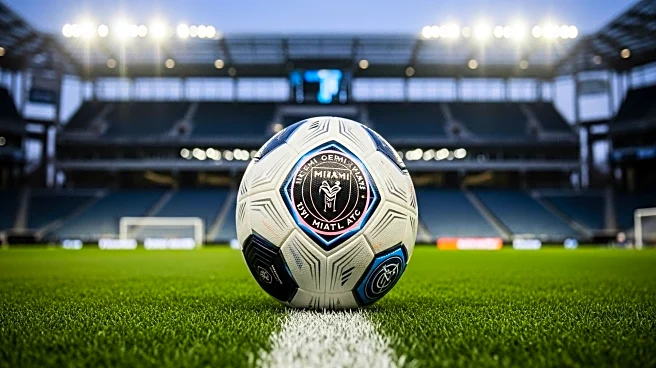What's Happening?
US soccer is undergoing a significant transformation with a focus on building and owning stadiums. This shift, which began after the turn of the century, has allowed clubs to stabilize and grow the sport sustainably. Major League Soccer (MLS) has embraced this model, with 23 of its 30 teams playing in soccer-specific stadiums. The trend extends to lower divisions, with the United Soccer League (USL) planning to launch a Division I league in 2028, emphasizing stadium ownership. Women's soccer is also part of this boom, with Kansas City Current's CPKC Stadium being the first built specifically for a women's team. The stadium boom is seen as essential for ensuring the longevity and stability of soccer clubs in the US.
Why It's Important?
The stadium boom in US soccer is crucial for the sport's long-term viability and growth. By owning stadiums, clubs can create a stable revenue stream and establish a physical presence in their communities, which is vital for fan engagement and support. This approach has helped MLS expand and stabilize, preventing potential collapse. The focus on real estate is also paving the way for promotion and relegation systems, which could further enhance competition and development within the sport. The investment in stadiums reflects a strategic shift that prioritizes sustainability and community integration, ensuring soccer's continued growth and popularity in the US.
What's Next?
As US soccer continues to expand its stadium portfolio, the focus will be on integrating promotion and relegation systems, particularly within the USL. This will require teams to meet specific stadium capacity requirements, prompting further investment in infrastructure. The upcoming World Cup will likely accelerate these developments, with teams aiming to capitalize on increased interest in soccer. Additionally, MLS teams like New York City FC and Chicago Fire are planning moves to soccer-specific stadiums, further solidifying the trend. The emphasis on stadium ownership will continue to shape the future of US soccer, influencing league structures and team strategies.










